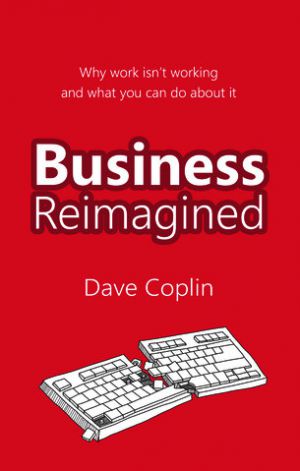
Why is work so often inefficient and counter-productive? Can't technology help? Maybe ? but surprisingly given that its author is from Microsoft, this book doesn't think that all we need is the next software update.
Google, which regularly tops polls of the best places to work, scores highly for its perks as well as for the chance to work on something millions of people use. Microsoft also regularly wins awards for being a good place to work ? as much for flexible working practices as for conveniences such as dry cleaning and well-being centres in the office. But for the rest of us, work often still feels more like The Office than a new world of technology-empowered flexibility and productivity.
We can bring our favourite tablets to work ? in fact, we often feel we have to, because the PCs and business tools we're supposed to use are slow, clunky and locked down. And in survey after survey, the vast majority of employees in the US and UK are disengaged, uninspired and frustrated. But is the problem the fact that the technology we've picked to transform business hasn't transformed the process of actually getting work done; or is it that we need to change more about work than the screen on which we do it? After all, the average office is still organised in much the same way factories have been since the industrial revolution ? when efficiency came from standardising the production process, and you got paid for the hours you worked rather than the value of what came off the production line.
In Business Reimagined: Why work isn't working and what you can do about it, Dave Coplin points out that this disconnect between employees and the outcome of their work is pretty much guaranteed to make us feel disengaged, just when we need to be "professional, independent creative beings employed by our firms to help them achieve great outcomes". And no, the open-plan office, or cubicle farm, doesn't help ? which is why you see so many people wearing headphones at work. Then there's the deluge of email, most of which contains information better sent through other channels. But thanks to the same inertia that keeps us using the QWERTY keyboard instead of the far more efficient Dvorak layout, we stick with the office we know ? even though it doesn't give us the right space, physically or creatively.
What's the alternative? Coplin is the chief envisioning officer for Microsoft in the UK, so you might be expecting a manual about using Office 365 and Windows Phone. Instead, he takes a hard look at flexible working and discovers that the reason we still cram ourselves into crowded commuter trains and endure traffic jams isn't that our bosses think we won't be hard working and committed when we work away from the office ? although, as he points out, Marissa Mayer's memo ending remote working at Yahoo is what happens when bosses think a flexible working policy is being abused and they don't have effective management to deal with it in a less sweeping way.
The biggest problem turns out to be that we believe our peers will think we're slacking off ? because we're sure they would slack off themselves if they weren't at their office desk. And that anxiety means people who do take up flexible working often overwork and burn themselves out trying to convince everyone they're really working.
True flexible working isn't about making it easier for parents, or even about getting happy employees who are more productive because they have a decent work/life balance, which is as much as many companies hope for. Rather, it's about switching the way the business works ? focusing on outcomes, and creating empowered employees who take responsibility. Successful flexible working takes a huge cultural shift that goes far beyond remote working, Coplin argues.
Part of his solution involves what people have been calling 'enterprise social' but might be better termed 'using technology to help people inside your company talk to each other so they can find out what's going on'. Coplin has excellent examples of what works well and what doesn't, plus tips for changing the culture so that local, remote, and flexible workers actually communicate. There are a few Microsoft references here, mostly to Yammer, but also an intriguing discussion of working on 'live' information in the cloud collaboratively rather than opening up Word and Excel documents that sounds rather like the vision for the future of Office that Steve Ballmer mentioned in his reorganisation memo.
He also looks at the famous Netflix presentation on how to be more efficient by trusting staff to be self-disciplined rather than traditionally hierarchical and quotes Yammer's Adam Pisoni extensively on the way that company is managed. His description of what an engaging, creative, self-directed democratic organisation might look like will be inspiring or frustrating depending on whether you think your company has a chance of making the shift.
This book does little more than make you think and whet your appetite. But if you're considering how business can make work feel like a way of contributing rather than something to fill the time until the next tweet, it's a good place to start.